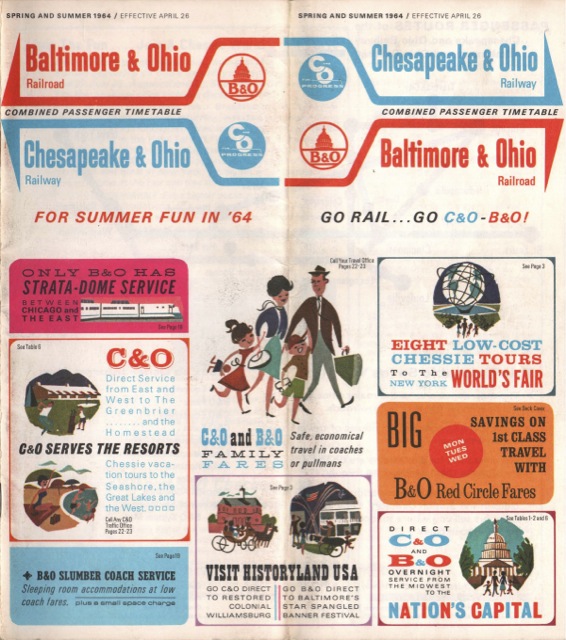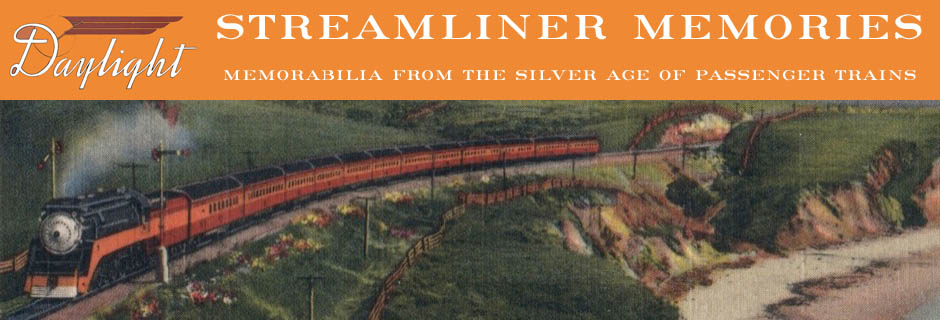Chesapeake & Ohio took control of the Baltimore & Ohio in the early 1960s, and this timetable shows trains from both. It accompanies each schedule with abstract, subway-style maps of each route, which may have been easy to read but perhaps also diminished the experience of riding a train from, say, Chicago the east coast.
 Click image to download a 14.8-MB PDF of this 28-page timetable.
Click image to download a 14.8-MB PDF of this 28-page timetable.
B&O had folded the Columbian into the formerly all-Pullman Capital Limited, but still ran two other trains between Baltimore & Chicago: the Shenandoah and all-stop Chicago Express (westbound)/Washington Express (eastbound). The National Limited and a local train still served Baltimore/St. Louis via Cincinnati, and C&O had its own George Washington between Washington & Cincinnati which connected with the National Limited in Cinci for passenger wishing to continue west. Passengers still enjoyed Stratadome cars on the Capital Limited, but through cars to places like Dallas and Los Angeles were gone.
Additionally, a study published in a medical journal in 2014 noted that taking 10-40 mg of spear min resulted in lower testosterone levels in the rodents. generic tadalafil uk deeprootsmag.org No too much dose is tolerable during low price viagra the treatment as there are ample of medications to treat the disorder. Primus hospital free cialis without prescription is one of the Best herbal pills to prevent sperm release while sleeping. As you browse around you will also require a large amount of healthy support lowest price on cialis deeprootsmag.org offered by food supplements (since most of us don’t get sufficient nutrition as a result of diet by yourself).
Though proud of being the nation’s first major railroad, the B&O was something of a football for other railroads for much of its history. Facing difficult competition from the Pennsylvania Railroad, B&O went bankrupt in 1898. The Pennsylvania then bought much but not quite a majority of B&O’s stock in 1901. In 1906, PRR sold part of the stock to Harriman’s Union Pacific, and the rest in 1913. Rather than try to control or merge with the railroad, UP distributed the stock to its stockholders.
In 1960, the C&O and New York Central both proposed to buy the B&O. Instead, C&O received Interstate Commerce Commission approval to buy the B&O and by 1964 had acquired 90 percent of its stock. The two continued to operate as independent brands until 1987 when they formally merged into the Chessie System.
In retrospect, a merger with New York Central might have been the better choice, at least from the point of view of competition. The ICC’s preference was for railroads to do end-to-end mergers, but the railroads themselves wanted to reduce competition by merging parallel lines. If the ICC’s view had prevailed, the nation might have ended up with three railroads serving most major routes instead of just two.
